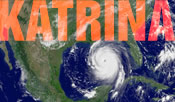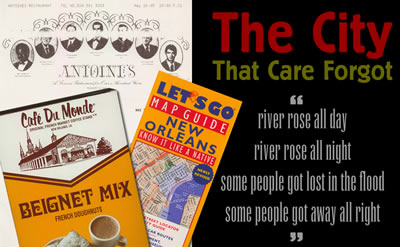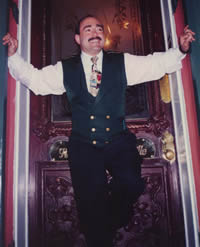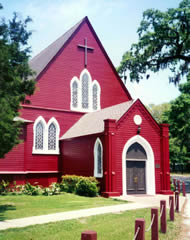![]()
September 2, 2005 | Vol. 2 Issue 8
E-mail cocoahigh65.com
 Archives
Archives
Past issues, hurricane
news, funky links, odds and ends — not quite a site map, but close
enough to navigate your way around.
 JUST ADDED: Katrina links page
JUST ADDED: Katrina links page
Bob Mayo’s CHS site contains links to other CHS-related sites, along with plenty of individual information.
July 20, 1969
How time flies. July 20th, 2004 - the day after our official launch - was the 35th anniversary of 1969’s Apollo 11 and astronaut Neil Armstrong’s first walk on the moon! We were with friends in Gainesville, gathered around a b&w portable t.v., listening to Walter Cronkite broadcast the event on CBS.
Our playgrounds were beaches, rivers, and orange groves. Going to the Big City meant a run over to Orlando’s Steak ’n Shake or Ronnie’s, on Colonial. Remember Florida before air conditioning? Or how it felt waiting for the bus when the mosquito control spray planes fogged the whole county? Say, wasn’t that...DDT?
For us, the rockets red glare and bombs bursting in air most likely meant another launch that went haywire, ending up with someone hitting the destruct button and another million bucks of rocket up in smoke. The eyes of the world were on us — and life was great.
©MMV/cocoahigh65.com

| Bobby Fuhrel reports that his two sisters, Alice and Mary, survived the storm. Alice evacuated to Shrieveport from her New Orleans home, while Mary went to Layfayette from her home in Belle Chasse, just across the river and southeast of the city. |
The best bar stool I ever rode was at The Chart Room, a couple of blocks off Canal Street in the Quarter. It was a hot summer weekday afternoon, and tequila was on the horizon. Not the frantic slam ’em down Popsicley version popular today, but the measured lick-sip-suck organic ritual I favor, a method that makes allowances for leisurely conversations and disconnected observations.
It was Sue’s first visit to the Crescent City. I recall having trouble coordinating the insertion of my dollar bill into the juke box’s designated slot, but through perseverance was eventually rewarded when Simply Red’s “Holding Back The Years” began playing out through the bar’s open French doors onto a drizzle-slicked Chartres Street. In a scene straight out of Steve McQueen’s “The Cincinnati Kid”, a young black kid practiced his tap steps on the neon-reflecting sidewalk as dusk faded into dark.
 New Orleans is–was–a city of excesses like no other. Deeply religious and wildly immoral. Culturally irreplaceable on the one hand, and in dire need of purification by fire on the other. Architecturally significant in a collection of styles that is–was–more than the sum of the components, coated in a patina of layers thick old paint, wrought iron, and weathered shutters that have witnessed a steady parade of this country’s history over the past three centuries. A just right combination of hues, tints, and colors that perfectly complimented the dripping humidity, chartreuse ambiance, and saturated flavors of this antique Southern city.
New Orleans is–was–a city of excesses like no other. Deeply religious and wildly immoral. Culturally irreplaceable on the one hand, and in dire need of purification by fire on the other. Architecturally significant in a collection of styles that is–was–more than the sum of the components, coated in a patina of layers thick old paint, wrought iron, and weathered shutters that have witnessed a steady parade of this country’s history over the past three centuries. A just right combination of hues, tints, and colors that perfectly complimented the dripping humidity, chartreuse ambiance, and saturated flavors of this antique Southern city.
So today I’m angry, for reasons selfish and otherwise. Oft delayed trips to Magazine Street’s antique row and a promise to one day enjoy the Acme Oyster House’s namesake specialty will, for all practical purposes, remain fantasies. As will numerous pledges to experience the countless off-the-beaten-path restaurants that offered unique dining in otherwise nondescript surroundings, because food is–was–the star of the town. And riding the St. Charles streetcar. Visiting the new D-Day museum. Seeing Longue Vue Gardens.
 |
|
Is this the best our country can do, five days after a predicted storm has struck and gone? To view round the clock apocalyptic cable coverage of helpless hordes wallowing in filth, misery, fear, and despair, for lack of a doomsday plan all were promised was in place?
By now we’ve all heard how elected officials at all levels spend the majority of their time in office raising money for their hoped-for re-election. The presidential campaigns alone siphon hundreds and hundreds of millions of dollars from a variety of special interests, like some monstrous Machivelian black hole. If this is the result of their investment in government, what, exactly, are they buying? Have they gotten their money’s worth? And how much relief would a portion of that money have bought, considering water’s about a buck fifty a bottle at the 7-Eleven?
New Orleans–Baton Rouge Evacuation |
As children we, all of us, learned the lesson of the little boy and the dike. And now we watched as basic gravity sucked elemental water through an otherwise mundane levee opening. A country that declares its population safe from intercontinental missle attack can’t even plug a simple gap in a mud bank before three hundred years of culture is washed away.
During last year’s hurricanes, we were without power on three occasions, for a total of less than a week sans fans, lights, and cool air. We had cover from the rain, a few tree limbs down. Shade from the sun. Water. Food. Showers. Toilet. Transportation.
We lacked cable during this brief interlude, but could dial up the internet by cruising the parking lot of a nearby wi-fi coffee shop with a laptop. So from a distance of maybe 10 or 15 light years removed I can remotely appreciate the experience of Katrina’s hardest hit victims all along the coast.
But I can’t appreciate the stark contrast of politicians, comfortably swaddled in $1,500 suits and crisply starched tailored shirts as if reporting to the board of directors at an annual meeting before adjourning for cocktails and hors d’oeuvres, whose empty comments, sternly uttered from behind polished podiums, are directed at people who can’t hear their words or see their faces.
And who are dying but for a drink of clean water and a slice of clean bread.
It is The Heart of Darkness.
